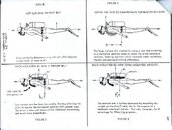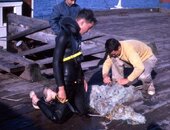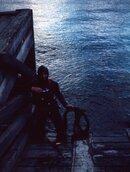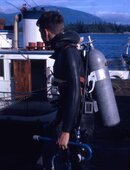I had the seam on the internal bladder of my wing fail while on a 160 ft dive off Ship Rock (Catalina) years ago and had to swim up the face of the pinnacle to the surface. Not too difficult, but certainly an eye opener. An SMB would have been a good thing to have for redundancy. I had plenty of gas (main tank and pony) so that wasn't an issue.
Certainly correct that BCDs often don't get the care they deserve. However in 51 years of diving, this is the only real failure I've had (of course 28 years I dove without a BCD). I have had a few incidents where my dump valves were not sealing properly, but the air leakage was not as near-catastrophic as the failed bladder.
Certainly correct that BCDs often don't get the care they deserve. However in 51 years of diving, this is the only real failure I've had (of course 28 years I dove without a BCD). I have had a few incidents where my dump valves were not sealing properly, but the air leakage was not as near-catastrophic as the failed bladder.








